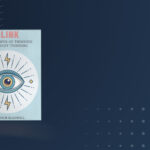
Book Summary: Blink by Malcolm Gladwell
December 14, 2024
Book Summary: Profit First by Mike Michalowicz
January 11, 2025Edward de Bono’s Six Thinking Hats is a groundbreaking framework for improving thinking, decision-making, and problem-solving.
By introducing six distinct modes of thought, each symbolized by a metaphorical hat, de Bono provides a structured way to analyze problems from multiple perspectives. This article explores the core principles of the Six Thinking Hats method, breaking down its applications and benefits for individuals and teams.
What Are the Six Thinking Hats?
The Six Thinking Hats method organizes thinking into six categories:
- White Hat: Focuses on facts and data.
- Red Hat: Addresses emotions and intuition.
- Black Hat: Considers risks and potential issues.
- Yellow Hat: Highlights optimism and opportunities.
- Green Hat: Sparks creativity and new ideas.
- Blue Hat: Oversees and organizes the thinking process.
By deliberately separating these modes of thinking, this method ensures a balanced and comprehensive approach to decision-making, preventing biases and confusion.
Why Structured Thinking Matters
De Bono emphasizes that thinking often falters because people attempt to juggle multiple perspectives simultaneously. The Six Thinking Hats framework provides clarity by dedicating time to each type of thinking. For instance, in a business meeting, rather than debating between risks and benefits all at once, participants can allocate time to explore each perspective systematically. This structured thinking fosters more effective discussions and better outcomes.
The Six Thinking Hats in Action
1. White Hat: Facts and Data
The White Hat focuses on objective information. It’s about gathering facts, identifying what is known, and recognizing gaps in knowledge. Questions to ask during the White Hat phase include:
- What data do we have?
- What additional information is needed?
- Are there trends or patterns we can identify?
Example: In a product launch, the White Hat phase might involve researching market trends, analyzing competitor strategies, and reviewing customer feedback.
2. Red Hat: Emotions and Intuition
The Red Hat acknowledges the role of emotions in decision-making. This phase creates space to express feelings and gut instincts without judgment.
Questions to consider:
- How do we feel about this idea?
- Are there any underlying concerns or biases?
Example: If a team member feels uneasy about a new project, the Red Hat phase allows them to voice their concerns, uncovering potential issues that might have been overlooked.
3. Yellow Hat: Optimism and Benefits
The Yellow Hat represents positive thinking. It’s about identifying opportunities and benefits, emphasizing what could go right.
Key questions:
- What are the advantages of this approach?
- How can we make this work?
Example: When evaluating a risky investment, the Yellow Hat phase might highlight long-term rewards and strategic advantages.
4. Black Hat: Risks and Caution
The Black Hat focuses on critical thinking and risk assessment. It’s about identifying potential challenges and weaknesses constructively.
Questions to ask:
- What could go wrong?
- Are there any potential obstacles or threats?
Example: During a marketing campaign, the Black Hat phase might reveal logistical risks or potential customer objections, allowing the team to address these issues proactively.
5. Green Hat: Creativity and New Ideas
The Green Hat is dedicated to innovation and lateral thinking. It encourages brainstorming and exploring unconventional solutions.
Questions to inspire creativity:
- What’s a completely different way to approach this?
- Are there any out-of-the-box ideas?
Example: When tackling a persistent problem, the Green Hat phase might involve techniques like mind-mapping or role-playing to generate fresh ideas.
6. Blue Hat: Organization and Management
The Blue Hat oversees the entire thinking process. It’s about setting goals, defining agendas, and summarizing outcomes.
Key roles of the Blue Hat:
- Planning and organizing discussions.
- Ensuring balanced contributions from all hats.
- Summarizing conclusions.
Example: In a team meeting, the Blue Hat might establish the agenda, allocate time for each hat, and ensure all perspectives are considered before making a final decision.
Applications of the Six Thinking Hats
1. Business and Team Collaboration
The Six Thinking Hats method is particularly effective in team settings. By separating thinking modes, it ensures all voices are heard and minimizes conflicts.
Use Case: In product development, teams can use the hats to explore customer needs, assess risks, and generate innovative solutions systematically.
2. Education and Learning
Teachers and students can apply the Six Thinking Hats framework to improve critical thinking and creativity.
Use Case: In a classroom debate, students can wear different “hats” to analyze a topic from multiple perspectives, fostering deeper understanding.
3. Personal Decision-Making
Individuals can use the hats to tackle complex personal challenges, such as career decisions or financial planning.
Use Case: When deciding on a career move, the hats can help balance emotions, assess risks, and explore potential benefits.
Benefits of Using the Six Thinking Hats
- Balanced Perspectives: Ensures that all aspects of a problem are considered.
- Enhanced Creativity: Encourages innovative thinking through the Green Hat.
- Improved Collaboration: Reduces conflicts and promotes constructive discussions in teams.
- Structured Problem-Solving: Organizes thinking into clear, manageable phases.
- Better Decisions: Combines emotional intelligence, critical analysis, and optimism for well-rounded outcomes.
Challenges and How to Overcome Them
While the Six Thinking Hats method offers numerous benefits, it’s not without challenges. Common issues include:
- Resistance to Structure: Some individuals may find the structured approach rigid. Solution: Highlight the flexibility within each hat to address concerns.
- Time Constraints: Allocating time for each hat can feel cumbersome in fast-paced environments. Solution: Focus on the most relevant hats for the situation at hand.
Final Thoughts: Why the Six Thinking Hats Matter
Edward de Bono’s Six Thinking Hats is a transformative tool for improving thinking and decision-making. By embracing structured thinking, individuals and teams can unlock creative solutions, assess risks effectively, and achieve better results. Whether applied in business, education, or personal life, this framework empowers you to think with clarity and purpose.
Start incorporating the Six Thinking Hats in your decision-making process today, and experience the difference it makes in achieving your goals. For more insights into creative thinking and structured problem-solving, explore Edward de Bono’s timeless strategies.


